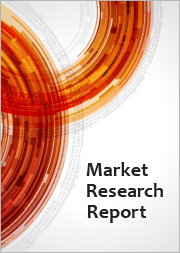
|
시장보고서
상품코드
1438158
세꼐 소자 시스템 시장 예측(-2030년) : 제품별, 선박 유형별, 최종 사용자별, 지역별 분석Degaussing Systems Market Forecasts to 2030 - Global Analysis By Product (Hardware and Software), By Vessel Type (Small Vessel, Medium Vessel and Large Vessel), End User, and By Geography |
||||||
Stratistics MRC에 따르면 세계의 소자 시스템 시장은 2023년에 9억 달러를 차지하고 예측 기간 동안 CAGR 5.7%로 성장하고 2030년에는 13억 달러에 이를 전망입니다.
소자 시스템은 함정과 잠수함의 자기 서명을 줄이거나 제거하기 위해 설계된 해양 기술입니다. 이 시스템은 선박의 구조에 남아있는 자기를 중화하고 자기 기뢰의 영향을 최소화하고 전략적 스텔스 성을 향상시킵니다. 소자 시스템은 더 안전한 항해를 보장하고 자기 기반 감지 및 표적 시스템에 대한 취약성을 줄임으로써 선박의 생존 능력을 향상시킵니다.
Maritime Publications에 따르면 세계 무역량의 약 80%, 무역액의 70% 이상이 해상에서 이루어지며 전 세계 항구에서 관리되고 있습니다.
선박 보호의 중시 증가
함정의 보호가 점점 중시되고 있어, 소자 시스템 시장 성장 촉진요인이 되고 있습니다. 해상 위협이 진화함에 따라 해군 함대는 자기 기뢰와 탐지 시스템의 위험에 대항하기 때문에 자기 시그니처를 최소화하는 것을 우선시하고 있습니다. 소자 시스템은 자기 기반 위협에 대한 감수성을 낮추어 함정의 생존성을 높이는 데 매우 중요한 역할을 합니다. 이러한 해상안보에 대한 관심의 고조는 엄격한 규제와 함께 선진적인 소자 기술에 대한 수요를 뒷받침하고, 세계 해군 근대화 프로그램의 기술 혁신과 채용을 촉진하고 있습니다.
소자 시스템의 도입과 통합에 따른 비용
이러한 고급 시스템을 함정에 도입하는 데 필요한 초기 투자는 상당한 것으로 국방 예산에 재정적인 과제가 됩니다. 통합, 교정 및 지속적인 유지 보수의 복잡성은 재정 부담을 더욱 강화합니다. 그 결과, 방위 부문 내의 예산 제약이 보급의 방해가 되어, 해군 함대가 선진적인 소자 기술을 이용하는 기회가 제한될 가능성이 있습니다.
전 세계에서 진행중인 해군 근대화 구상
세계에서 진행 중인 해군 근대화 구상은 소자 시스템 시장에 큰 기회를 가져다 줍니다. 해군이 함대를 업그레이드함에 따라 함정의 생존성과 운영 효율성을 높이기 위한 고급 소자 시스템에 대한 수요가 증가하고 있습니다. 보다 엄격한 규제를 준수하고 진화하는 해양 위협에 대항할 필요성은 최첨단 소자 기술의 채택을 더욱 강화하고 있습니다. 이러한 이유로 제조업체와 공급업체는 현대 해군 요구 사항을 충족하는 혁신적인 솔루션을 제공하고 성장하는 시장에 자본 참여를위한 유리한 환경을 만들고 있습니다.
엄격한 전자파 규제
전자기 방사에 대한 엄격한 규정은 소자 시스템 시장에 위협을 가하고 있습니다. 이러한 규제는 안전과 환경 보호를 강화하기 위한 것이지만, 탈자 시스템에 대한 준수는 어려울 수 있습니다. 엄격한 배출 기준을 충족하려면 고급 기술이 필요하며 개발 비용이 증가할 수 있습니다. 또한 제조업체는 컴플라이언스 위반으로 인한 처벌 위험과 기존 시스템 적합성 문제에 직면합니다.
COVID-19의 영향:
COVID-19의 유행은 소자 시스템 시장에 큰 영향을 주었고, 세계 공급망을 혼란시키고 해군 프로젝트의 지연을 초래했습니다. 운영 정지 및 제한은 제조 및 배치 활동을 방해하고 수요 전체에 영향을 미쳤습니다. 게다가 방어 분야에서 예산 재분배는 소자 시스템의 조달 계획에 영향을 미쳤습니다. 팬데믹은 해상 안보의 중요성을 돋보이게 했지만, 세계 방위 지출에 영향을 미치는 운영상의 과제와 경제 불확실성으로 인해 시장 성장이 일시적으로 둔화되었습니다.
예측 기간 중 중형선 부문이 최대가 될 전망
중간 선박 부문은 예측 기간 동안 소자 시스템 시장에서 최대가 될 것으로 예측됩니다. 이것은 중형 함선에 의한 해군 함대의 근대화에 점점 초점이 맞추어지고 있기 때문입니다. 이 선박은 운영 능력을 강화하고 엄격한 규정에 대한 준수를 보장하기 위해 고급 소자 시스템에 대한 수요가 증가하고 있습니다. 이 부문의 우수성은 해군 근대화 프로그램에서 세계의 지속적인 노력을 반영하고, 소자 시스템의 실질적인 시장을 형성하고 있습니다.
예측 기간 동안 서비스 부문의 CAGR이 가장 높을 것으로 예상
서비스 부문은 소자 시스템 시장에서 예측 기간 동안 가장 높은 성장률을 달성할 것으로 예측됩니다. 이는 유지보수, 캘리브레이션 및 교육 서비스에 대한 요구가 증가하고 있기 때문입니다. 소자 시스템의 복잡성이 증가함에 따라 최적의 성능을 보장하기 위한 전문 서비스에 대한 수요가 증가하고 있습니다. 또한 유지 보수 및 교육을 포함한 지속적인 지원 서비스가이 부문의 급성장에 기여합니다.
지역별 점유율
예측 기간 동안 북미는 가장 큰 시장 점유율을 차지하고 소자 시스템 시장을 독점할 것으로 예상됩니다. 이는 이 지역의 왕성한 국방 지출, 지속적인 해군 근대화 구상, 해상 안보의 중시에 기인하고 있습니다. 미국에는 주요한 방위 관련 기업이 존재하고 기술적인 진보도 북미가 시장을 선도하는 요인이 되고 있습니다. 게다가 이 지역은 전략적으로 해군 능력에 중점을 두고 있기 때문에 첨단 소자 시스템에 대한 수요가 높아지고 있습니다.
CAGR이 가장 높은 지역:
아시아태평양은 예측 기간 동안 소자 시스템 시장에서 가장 높은 성장을 이룰 전망입니다. 이 배경에는 해군의 근대화 노력의 격화, 방어 예산 증가, 해상 안보에 대한 주목 증가가 있습니다. 이 지역의 국가들이 해군 능력을 강화함에 따라 첨단 소자 시스템에 대한 수요가 증가하고 있습니다. 게다가 아시아태평양의 역동적인 지정학적 상황과 진화하는 해양 위협에 대항할 필요성은 이 지역의 큰 시장 성장 가능성에 기여하고 있습니다.
무료 맞춤형 서비스
이 보고서를 구독하는 고객은 다음 무료 맞춤설정 옵션 중 하나를 사용할 수 있습니다.
- 기업 프로파일
- 추가 시장 기업의 종합적 프로파일링(3개사까지)
- 주요 기업의 SWOT 분석(3개사까지)
- 지역 세분화
- 고객의 관심에 응한 주요국 시장 추계·예측·CAGR(주: 타당성 확인에 따름)
- 경쟁 벤치마킹
- 제품 포트폴리오, 지리적 존재, 전략적 제휴에 기반한 주요 기업 벤치마킹
목차
제1장 주요 요약
제2장 서문
- 개요
- 이해관계자
- 조사 범위
- 조사 방법
- 데이터 마이닝
- 데이터 분석
- 데이터 검증
- 조사 접근
- 조사 소스
- 1차 조사 소스
- 2차 조사 소스
- 전제조건
제3장 시장 동향 분석
- 성장 촉진요인
- 억제요인
- 기회
- 위협
- 제품분석
- 최종 사용자 분석
- COVID-19의 영향
제4장 Porter's Five Forces 분석
- 공급기업의 협상력
- 구매자의 협상력
- 대체품의 위협
- 신규 참가업체의 위협
- 경쟁 기업간 경쟁 관계
제5장 세계의 소자 시스템 시장 : 제품별
- 하드웨어
- 바이폴라 앰프
- 나침반 보정 장치
- 도체
- 코스 모니터 유닛
- 소자 코일 유닛
- 소자 제어 유닛
- DG 제너레이터
- 자력계
- 소프트웨어
제6장 세계의 소자 시스템 시장 : 선박 유형별
- 소형 선박
- 해양 순시선(OPV)
- MCMV/소해정
- FAC(패스트 어택 크래프트)
- 중형 선박
- 잠수함
- 콜베트함
- 구축함
- 대형 선박
- 항공모함
- 수륙양용선
- 프리게이트함
제7장 세계의 소자 시스템 시장 : 최종 사용자별
- 상대방 상표 제품 제조업자(OEM)
- 애프터마켓
- 레트로핏 소자 시스템
- 예비 부품
- 업그레이드 및 확장 키트
- 서비스
- 교정 및 시험
- 메인터넌스 및 보수
- 트레이닝
제8장 세계의 소자 시스템 시장 : 지역별
- 북미
- 미국
- 캐나다
- 멕시코
- 유럽
- 독일
- 영국
- 이탈리아
- 프랑스
- 스페인
- 기타 유럽
- 아시아태평양
- 일본
- 중국
- 인도
- 호주
- 뉴질랜드
- 한국
- 기타 아시아태평양
- 남미
- 아르헨티나
- 브라질
- 칠레
- 기타 남미
- 중동 및 아프리카
- 사우디아라비아
- 아랍에미리트(UAE)
- 카타르
- 남아프리카
- 기타 중동 및 아프리카
제9장 주요 발전
- 계약/파트너십/협업/합작투자(JV)
- 인수와 합병
- 신제품 발매
- 사업 확대
- 기타 주요 전략
제10장 기업 프로파일
- American Superconductor Corporation(AMSC)
- Bollinger Shipyards, LLC
- ECA GROUP
- Groupe Gorge
- Hensoldt AG
- IFEN SpA
- L3Harris Technologies, Inc.
- Larsen & Toubro Limited
- MacTaggart Scott & Company Ltd.
- Polyamp AB
- Raytheon Technologies Corporation
- Schneider Electric SE
- STL Systems AG
- Ultra Electronics Holdings plc
- Wartsila Corporation
According to Stratistics MRC, the Global Degaussing Systems Market is accounted for $0.9 billion in 2023 and is expected to reach $1.3 billion by 2030 growing at a CAGR of 5.7% during the forecast period. Degaussing systems are maritime technologies designed to reduce or eliminate the magnetic signature of naval vessels and submarines. These systems neutralize the residual magnetism in a ship's structure, minimizing susceptibility to magnetic mines and enhancing operational stealth. Degaussing ensures safer navigation and enhances the survivability of vessels by reducing their vulnerability to magnetic-based detection and targeting systems.
According to Maritime Publications, around 80% of the global trade by volume and over 70% of the global trade by value are carried out by sea and are controlled by ports worldwide.
Market Dynamics:
Driver:
Increasing emphasis on naval vessel protection
The increasing emphasis on naval vessel protection acts as a driver in the degaussing systems market. As maritime threats evolve, naval fleets prioritize minimizing their magnetic signatures to counter the risks posed by magnetic mines and detection systems. Degaussing systems play a pivotal role in enhancing naval vessel survivability by reducing susceptibility to magnetic-based threats. This heightened focus on maritime security, combined with stringent regulations, propels the demand for advanced degaussing technologies, driving innovation and adoption across naval modernization programs globally.
Restraint:
Costs associated with installing and integrating degaussing systems
The initial investment required for deploying these sophisticated systems on naval vessels is substantial, posing a financial challenge for defense budgets. The complexity of integration, calibration and ongoing maintenance further contributes to the financial burden. As a result, budget constraints within defense sectors may hinder widespread adoption, limiting the accessibility of advanced degaussing technology for naval fleets.
Opportunity:
Ongoing naval modernization initiatives worldwide
Ongoing naval modernization initiatives worldwide present a significant opportunity in the degaussing systems market. As naval forces upgrade their fleets, there is a heightened demand for advanced degaussing systems to enhance the survivability and operational effectiveness of vessels. The need to comply with stricter regulations and counter evolving maritime threats further drives the adoption of cutting-edge degaussing technologies. This creates a favorable environment for manufacturers and suppliers to capitalize on the growing market, offering innovative solutions aligned with modern naval requirements.
Threat:
Stringent regulations on electromagnetic emissions
Stringent regulations on electromagnetic emissions pose a threat to the degaussing systems market. These regulations are intended to enhance safety and environmental protection, but compliance can be challenging for degaussing systems. Meeting strict emission standards may necessitate advanced technologies, increasing development costs. In addition, manufacturers face the risk of non-compliance penalties and challenges in adapting existing systems.
Covid-19 Impact:
The COVID-19 pandemic significantly impacted the degaussing systems market, disrupting global supply chains and causing delays in naval projects. Lockdowns and restrictions hindered manufacturing and deployment activities, affecting the overall demand. Additionally, budget reallocations within defense sectors impacted procurement plans for degaussing systems. While the pandemic highlighted the importance of maritime security, it temporarily slowed market growth due to operational challenges and economic uncertainties affecting defense spending worldwide.
The medium vessel segment is expected to be the largest during the forecast period
The medium vessel segment is anticipated to be the largest in the forecast period in the degaussing systems market. This is attributed to the increasing focus on modernizing naval fleets with medium-sized vessels. These vessels exhibit a growing demand for advanced degaussing systems to enhance operational capabilities and ensure compliance with stringent regulations. The segment's prominence reflects the continuous efforts in naval modernization programs globally, creating a substantial market for degaussing systems.
The services segment is expected to have the highest CAGR during the forecast period
The services segment is projected to achieve the highest growth rate during the forecast period in the degaussing systems market. This is attributed to the increasing need for maintenance, calibration and training services. As the complexity of degaussing systems rises, there is a growing demand for specialized services to ensure optimal performance. Additionally, ongoing support services, including maintenance and training, contribute to the segment's rapid growth.
Region with largest share:
North America is expected to dominate the degaussing systems market with the largest market share during the forecast period. This can be attributed to the region's robust defense spending, continuous naval modernization initiatives and strong emphasis on maritime security. The presence of key defense contractors and technological advancements in the United States further contribute to North America's leading position in the market. In addition, the region's strategic focus on naval capabilities fuels the demand for advanced degaussing systems.
Region with highest CAGR:
The Asia-Pacific region is poised for the highest growth in the degaussing systems market during the forecast period. This is driven by escalating naval modernization efforts, increasing defense budgets, and a rising focus on maritime security. As countries in the region strengthen their naval capabilities, there is a growing demand for advanced degaussing systems. Furthermore, Asia Pacific's dynamic geopolitical landscape and the need to counter evolving maritime threats contribute to the region's significant market growth potential.
Key players in the market
Some of the key players in degaussing systems market include American Superconductor Corporation (AMSC), Bollinger Shipyards, L.L.C., ECA GROUP, Groupe Gorge, Hensoldt AG, IFEN S.p.A., L3Harris Technologies, Inc., Larsen & Toubro Limited, MacTaggart Scott & Company Ltd., Polyamp AB, Raytheon Technologies Corporation, Schneider Electric SE, STL Systems AG, Ultra Electronics Holdings plc and Wartsila Corporation.
Key Developments:
In May 2023, The U.S. Department of Defense announced that Fincantieri's U.S. subsidiary Marinette Marine (FMM) has been awarded a USD 526 million contract to build the fourth Constellation-class destroyer for the U.S. Navy. The contract for the main destroyer and nine option ships, signed in 2020, has a cumulative value of USD 5.5 billion, including post-delivery readiness support and crew training.
In December 2022, American Superconductor Corporation (AMSC), a U.S.-based energy technology company, announced that it has entered into a supply agreement with Huntington Ingalls Industries through its Ingalls Shipbuilding division for ship protection systems based on high temperature superconductors (HTS). They plan to deploy these systems aboard the San Antonio-class amphibious dock transport ship LPD-32.
In August 2022, The U.S. Navy has signed a contract with Bollinger Shipyards to design and build an unmanned surface ship capable of mine-sweeping and mine-hunting operations. The initial contract covers three vessels, with options for up to 27 more vessels. Bollinger is a privately held company that designs and manufactures military and commercial vessels.
Products Covered:
- Hardware
- Software
Vessel Types Covered:
- Small Vessel
- Medium Vessel
- Large Vessel
End Users Covered:
- Original Equipment Manufacturer (OEM)
- Aftermarket
- Services
Regions Covered:
- North America
- US
- Canada
- Mexico
- Europe
- Germany
- UK
- Italy
- France
- Spain
- Rest of Europe
- Asia Pacific
- Japan
- China
- India
- Australia
- New Zealand
- South Korea
- Rest of Asia Pacific
- South America
- Argentina
- Brazil
- Chile
- Rest of South America
- Middle East & Africa
- Saudi Arabia
- UAE
- Qatar
- South Africa
- Rest of Middle East & Africa
What our report offers:
- Market share assessments for the regional and country-level segments
- Strategic recommendations for the new entrants
- Covers Market data for the years 2021, 2022, 2023, 2026, and 2030
- Market Trends (Drivers, Constraints, Opportunities, Threats, Challenges, Investment Opportunities, and recommendations)
- Strategic recommendations in key business segments based on the market estimations
- Competitive landscaping mapping the key common trends
- Company profiling with detailed strategies, financials, and recent developments
- Supply chain trends mapping the latest technological advancements
Free Customization Offerings:
All the customers of this report will be entitled to receive one of the following free customization options:
- Company Profiling
- Comprehensive profiling of additional market players (up to 3)
- SWOT Analysis of key players (up to 3)
- Regional Segmentation
- Market estimations, Forecasts and CAGR of any prominent country as per the client's interest (Note: Depends on feasibility check)
- Competitive Benchmarking
- Benchmarking of key players based on product portfolio, geographical presence, and strategic alliances
Table of Contents
1 Executive Summary
2 Preface
- 2.1 Abstract
- 2.2 Stake Holders
- 2.3 Research Scope
- 2.4 Research Methodology
- 2.4.1 Data Mining
- 2.4.2 Data Analysis
- 2.4.3 Data Validation
- 2.4.4 Research Approach
- 2.5 Research Sources
- 2.5.1 Primary Research Sources
- 2.5.2 Secondary Research Sources
- 2.5.3 Assumptions
3 Market Trend Analysis
- 3.1 Introduction
- 3.2 Drivers
- 3.3 Restraints
- 3.4 Opportunities
- 3.5 Threats
- 3.6 Product Analysis
- 3.7 End User Analysis
- 3.8 Impact of Covid-19
4 Porters Five Force Analysis
- 4.1 Bargaining power of suppliers
- 4.2 Bargaining power of buyers
- 4.3 Threat of substitutes
- 4.4 Threat of new entrants
- 4.5 Competitive rivalry
5 Global Degaussing Systems Market, By Product
- 5.1 Introduction
- 5.2 Hardware
- 5.2.1 Bipolar Amplifiers
- 5.2.2 Compass Compensating Equipment
- 5.2.3 Conductors
- 5.2.4 Course Monitor Units
- 5.2.5 Degaussing Coil Units
- 5.2.6 Degaussing Control Units
- 5.2.7 DG Generators
- 5.2.8 Magnetometers
- 5.3 Software
6 Global Degaussing Systems Market, By Vessel Type
- 6.1 Introduction
- 6.2 Small Vessel
- 6.2.1 Offshore Patrol Vessels (OPV)
- 6.2.2 MCMV/Minesweeper
- 6.2.3 FAC (Fast attack Craft)
- 6.3 Medium Vessel
- 6.3.1 Submarines
- 6.3.2 Corvettes
- 6.3.3 Destroyers
- 6.4 Large Vessel
- 6.4.1 Aircraft Carriers
- 6.4.2 Amphibious Vessels
- 6.4.3 Frigates
7 Global Degaussing Systems Market, By End User
- 7.1 Introduction
- 7.2 Original Equipment Manufacturer (OEM)
- 7.3 Aftermarket
- 7.3.1 Retrofit Degaussing Systems
- 7.3.2 Spare Parts and Components
- 7.3.3 Upgrade and Enhancement Kits
- 7.4 Services
- 7.4.1 Calibration and Testing
- 7.4.2 Maintenance and Repair
- 7.4.3 Training
8 Global Degaussing Systems Market, By Geography
- 8.1 Introduction
- 8.2 North America
- 8.2.1 US
- 8.2.2 Canada
- 8.2.3 Mexico
- 8.3 Europe
- 8.3.1 Germany
- 8.3.2 UK
- 8.3.3 Italy
- 8.3.4 France
- 8.3.5 Spain
- 8.3.6 Rest of Europe
- 8.4 Asia Pacific
- 8.4.1 Japan
- 8.4.2 China
- 8.4.3 India
- 8.4.4 Australia
- 8.4.5 New Zealand
- 8.4.6 South Korea
- 8.4.7 Rest of Asia Pacific
- 8.5 South America
- 8.5.1 Argentina
- 8.5.2 Brazil
- 8.5.3 Chile
- 8.5.4 Rest of South America
- 8.6 Middle East & Africa
- 8.6.1 Saudi Arabia
- 8.6.2 UAE
- 8.6.3 Qatar
- 8.6.4 South Africa
- 8.6.5 Rest of Middle East & Africa
9 Key Developments
- 9.1 Agreements, Partnerships, Collaborations and Joint Ventures
- 9.2 Acquisitions & Mergers
- 9.3 New Product Launch
- 9.4 Expansions
- 9.5 Other Key Strategies
10 Company Profiling
- 10.1 American Superconductor Corporation (AMSC)
- 10.2 Bollinger Shipyards, L.L.C.
- 10.3 ECA GROUP
- 10.4 Groupe Gorge
- 10.5 Hensoldt AG
- 10.6 IFEN S.p.A.
- 10.7 L3Harris Technologies, Inc.
- 10.8 Larsen & Toubro Limited
- 10.9 MacTaggart Scott & Company Ltd.
- 10.10 Polyamp AB
- 10.11 Raytheon Technologies Corporation
- 10.12 Schneider Electric SE
- 10.13 STL Systems AG
- 10.14 Ultra Electronics Holdings plc
- 10.15 Wartsila Corporation

















